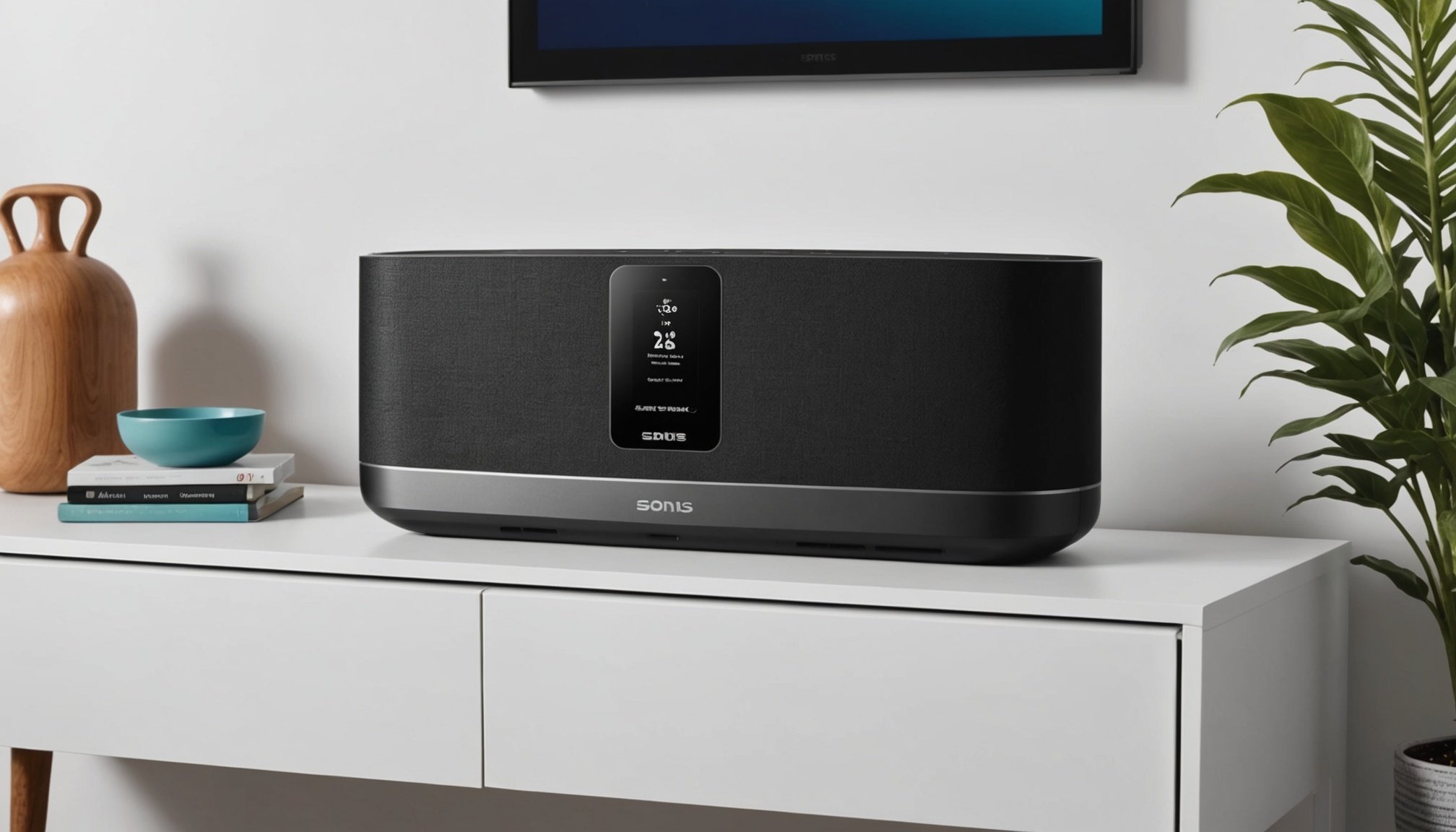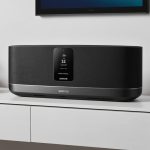Unlocking the Power of Sonos Arc: The Ultimate Guide to Multi-Room Audio with Google Assistant for Exceptional Sound Quality to Sonos Arc and Multi-Room Audio
If you’re looking to elevate your home audio experience, the Sonos Arc Ultra is an exceptional choice, especially when integrated with Google Assistant for a seamless and smart home setup. This guide will walk you through the process of setting up and optimizing your Sonos Arc Ultra for multi-room audio, ensuring you get the best sound quality and maximum convenience.
Understanding the Sonos Arc Ultra
The Sonos Arc Ultra is a 9.1.4 Dolby Atmos soundbar that has garnered significant attention for its sleek design and advanced features. Here are some key highlights:
Have you seen this : Mastering Remote Desktop Security: Essential Tips for Safeguarding Your Lenovo ThinkCentre M90n Connection
- Dolby Atmos Support: The Arc Ultra excels in creating a 3D bubble of sound using its side and upward-firing drivers, making it one of the best Dolby Atmos experiences without additional surround speakers[1].
- Sound Motion Technology: This cutting-edge technology enhances bass performance, providing a richer and more immersive audio experience[1].
- Automatic Room Calibration: The soundbar comes with an excellent automatic room calibration feature, ensuring the sound is optimized for your specific room environment[1].
- Voice Control and Connectivity: It supports Alexa, Sonos Voice Control, Spotify Connect, AirPlay 2, Bluetooth, and Google Assistant, making it highly versatile and easy to control[1].
Setting Up Your Sonos Arc Ultra
Setting up your Sonos Arc Ultra is straightforward and user-friendly. Here’s a step-by-step guide:
Connecting to Your Network
- Download and open the Sonos app on your smartphone or tablet.
- Follow the app’s instructions to connect your Arc Ultra to your Wi-Fi network.
- This initial setup is crucial as it lays the foundation for expanding your Sonos system to other rooms in your home[3].
Integrating with Google Assistant
- To integrate Google Assistant, you need to link your Google Home account with your Sonos app.
- Open the Google Home app, go to the account page, and select the music services. Here, you can set Sonos as your default music player, although some users have reported issues with selecting Sonos Radio as the default source[2][4].
Configuring Voice Control
- Once integrated, you can use voice commands to control your Sonos Arc Ultra. For example, you can say “Hey Google, play music in the living room” or “Hey Google, set the volume to 50%.”
- However, some users have encountered issues with Google Assistant setting the volume to 100% despite specific instructions. This can be temporarily fixed by removing and re-adding the Google Assistant integration[4].
Building a Multi-Room Audio System with Sonos
One of the standout features of Sonos is its ability to create a seamless multi-room audio experience. Here’s how you can expand your setup:
Grouping Speakers Together
- Open the Sonos app and go to the “Rooms” tab.
- Select the speakers you wish to group together to play music synchronously across different rooms.
- You can play the same music throughout the house or choose different tracks for each grouped room, making it ideal for entertaining[3].
Creating a Stereo Pair
- For a more immersive sound experience, you can create a stereo pair using two identical Sonos speakers, such as two Sonos One units.
- Select the two speakers in the Sonos app and choose the “Create Stereo Pair” option. This configuration enhances the audio quality by providing distinct left and right channels[3].
Incorporating Wired Speakers
- If you have existing wired speakers, you can integrate them into your Sonos system using the Sonos Amp or Port.
- The Sonos Amp powers passive speakers, while the Sonos Port connects to your stereo or home theater receiver, enabling you to stream music and control it through the Sonos app[3].
Enhancing Your Home Theater Experience
To take your home theater experience to the next level, here are some tips and recommendations:
Adding a Subwoofer
- The Sonos Arc Ultra delivers decent bass, but adding a Sonos subwoofer significantly improves the low end and allows the soundbar to focus on the mids and highs for better vocals[1].
- For an ultimate setup, you can pair the Arc Ultra with up to two Sonos subwoofers and either Era 100 or Era 300 speakers for surround sound.
Using HDMI eARC
- The Sonos Arc Ultra supports HDMI eARC, allowing you to connect your gaming console, Blu-ray player, and cable box directly to the soundbar.
- This setup enables you to enjoy 4K/120 fps content with uncompressed Dolby Atmos, HDR, and Dolby Vision passthrough, making it ideal for gaming and high-definition video[1].
Practical Tips for Optimizing Sound Quality
To get the most out of your Sonos Arc Ultra and multi-room setup, here are some practical tips:
Room Placement and Acoustics
- Use the Sonos Trueplay tuning feature to customize the sound of your speakers based on the room’s unique characteristics.
- Experiment with different speaker placements to find the best sound for each room[3].
Regular Updates and Maintenance
- Regularly update the Sonos app and firmware of your speakers to access new features and improvements.
- Adjust settings such as EQ and loudness to find the best sound for each room[3].
Comparison of Key Features: Sonos Arc Ultra vs Other Soundbars
Here’s a comparison table highlighting the key features of the Sonos Arc Ultra against other notable soundbars:
| Feature | Sonos Arc Ultra | Flexus Core 200 | Sony Bravia Theater Quad |
|---|---|---|---|
| Dolby Atmos Support | Yes | Yes | Yes |
| Automatic Room Calibration | Yes | No | Yes |
| Voice Control | Alexa, Google Assistant | No | Alexa, Google Assistant |
| Connectivity | Wi-Fi, Bluetooth, AirPlay 2, Spotify Connect | Bluetooth | Wi-Fi, Bluetooth, AirPlay 2, Spotify Connect |
| HDMI Inputs | 3 HDMI 2.1 inputs | No | eARC |
| Subwoofer Compatibility | Yes (up to 2 subwoofers) | Yes (Flexus Sub 100) | Yes |
| Surround Sound Capability | Yes (with Era 100/300) | Yes (with Surround 100) | Yes |
| Price | Premium | Sub-$500 | Premium |
The Sonos Arc Ultra, when integrated with Google Assistant and expanded into a multi-room audio system, offers an unparalleled audio experience. Here are some final thoughts and recommendations:
- Invest in Quality: While the Sonos Arc Ultra is a premium product, the sound quality it delivers is well worth the investment. Adding a subwoofer and surround speakers can further enhance your home theater experience[1].
- Ease of Use: The Sonos app and Google Assistant integration make controlling your audio setup incredibly easy and convenient[3].
- Future-Proof: With features like HDMI eARC and support for 4K/120 fps content, the Sonos Arc Ultra is future-proof, ensuring you can enjoy the latest in audio and video technology[1].
In the words of an audio enthusiast, “The Sonos Arc Ultra nailed it, creating a 3D bubble of sound using its side and upward-firing drivers. It was hands-down the most convincing Atmos experience we’ve heard without adding surround speakers.”[1]
By following this guide, you can unlock the full potential of your Sonos Arc Ultra and create a multi-room audio system that provides exceptional sound quality and convenience, making it the heart of your smart home.











